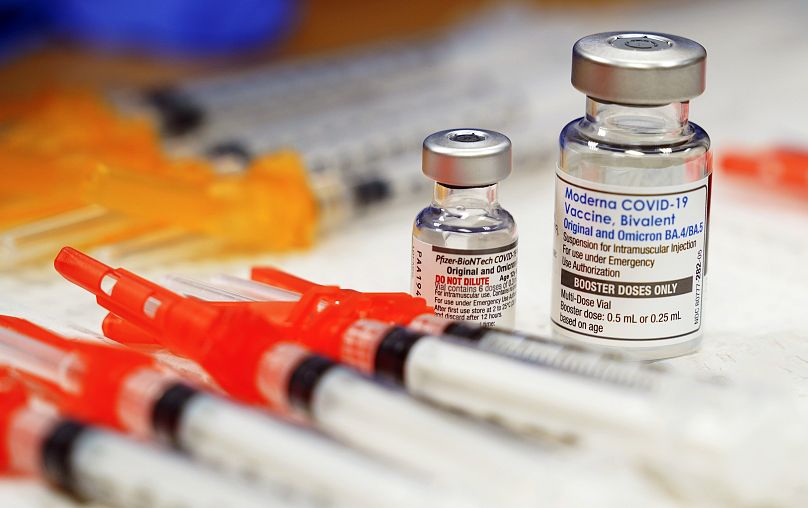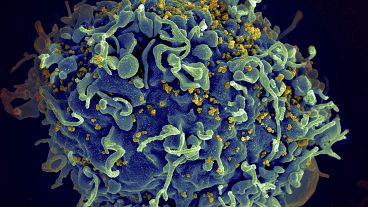What’s the latest COVID "variant of interest" and how serious a threat is it?
While the pandemic may seem like a distant memory to many, coronavirus continues to spread with new cases increasing due to the latest mutated strains of the virus.
A new subvariant of COVID-19 called EG.5 is increasing in Europe after first being identified earlier this year.
It was designated a “variant of interest” by the World Health Organization (WHO) this month as cases increase globally.
Here’s what you need to know about it.
What is the new variant EG.5?
EG.5 is a sublineage of the Omicron variant of COVID-19 and is closely related to other variants that have been circulating worldwide. It is a mutated version of the virus.
Its prevalence has increased globally from 7.6 per cent of COVID-19 cases at the end of June to 17.4 per cent at the end of July. This is why the WHO has now been designated “of interest”.
But the public health risk of this lineage is low due to its proximity to previous circulating variants, according to WHO. The global health body said, however, that the subvariant could become dominant in some countries or globally and cause an increase in COVID-19 cases.
“It clearly has some kind of advantage over the others,” explained Rowland Kao, Professor of Veterinary Epidemiology and Data Science at the University of Edinburgh.
But he told Euronews Next that it’s “nowhere near anything as dramatic” as when the original variant of Omicron began increasing in prevalence globally in 2021.
Some have nicknamed another sublineage of EG.5, known as EG.5.1 as “Eris,” a name that has circulated in the news and online.
What are the symptoms of EG.5 and is it more severe than other variants?
The symptoms of EG.5 appear to be similar to other variants, Andrew Pekosz, a professor in the Department of Molecular Microbiology and Immunology at Johns Hopkins University said in an interview with the university’s public health school.
Common COVID-19 symptoms include fever, cough, and fatigue as well as a runny nose, headache or muscle pain. It can feel like the cold, flu or pneumonia.
“We don’t detect a change in severity of EG.5 compared to other sublineages of Omicron that have been in circulation since late 2021,” said WHO’s COVID-19 technical lead Maria Van Kerkhove earlier this month.
Andrew Pollard, the Ashall Professor of Infection and Immunity at the University of Oxford, told Euronews Next that there is some evidence that Omicron and its subvariants are less severe than earlier strains of the virus.
But, he said, this is “complicated to interpret as the population is now highly immune against the virus and our immunity will also defend against severe disease”.
How much is it circulating?
EG.5 was originally driven by circulation in China, Japan and South Korea and now, it has been increasing in North America and in Europe.
In France, EG.5 represented 26 per cent of sequences on 17 July compared to 15 per cent of sequences the week prior, which is “consistent with the global situation,” Public Health France said.
In the UK, EG.5.1 in particular has the highest growth rate for variants in the country and represents 14 per cent of cases.
In the United States, EG.5 represents roughly 17 per cent of cases, more than any other lineage of Omicron that is being monitored, according to data from the Centres for Disease Control and Prevention (CDC).
“Several countries with rising EG.5 prevalence have seen increases in cases and hospitalisations, although at present there is no evidence of an increase in disease severity directly associated with EG.5,” said WHO in its risk evaluation of the variant.
Should you be concerned about these new mutations of COVID?
“The longer we go on without a major event occurring, we can slowly become more comfortable again, because of that combination of vaccine production (and) natural immunity… But it's too early to be completely complacent,” Kao said.
Even if COVID-19 becomes another seasonal respiratory infection circulating, if a variant “increases the number of COVID cases even if not catastrophically, the number of hospitalisations in combination with what you regularly expect from flu, it may still cause us some real difficulties,” he said.
Currently, the COVID-19 vaccines are being adapted for the Omicron XBB variants which are close to EG.5.
Pfizer and BioNTech applied for regulatory approval of these boosters with the European Medicines Agency in June.
“Vaccines still provide excellent protection against severe disease and death caused by all COVID-19 variants,” said Pollard at the University of Oxford.
“Booster doses reduce the risk of infection in those individuals who are frail, elderly or have underlying health conditions which could worsen if they developed infection. Current vaccines are likely to provide some protection against this variant,” he said in an email.
As countries continue sequencing, new variants will continue to emerge. Experts this week pointed to another variant that has reportedly emerged in Denmark and Israel with more mutations to the spike protein.
WHO’s Van Kerkhove pointed out that COVID-19 is evolving and circulating in every country.
“This will continue and this is what we have to prepare for,” she said, urging countries to continue sequencing and sharing data publicly.




